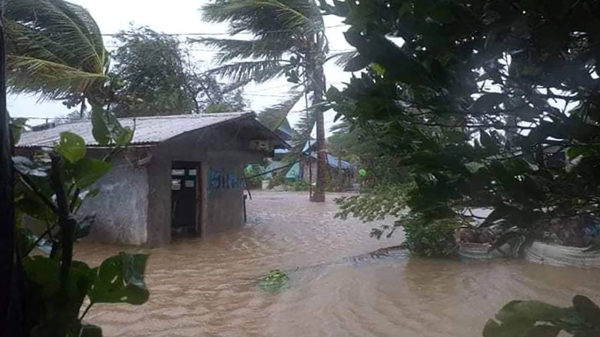
4 previous storms that hit the country killed at least 159 people
Authorities have started preemptive evacuations ahead of another tropical storm
MANILA: The fifth major storm to hit the Philippines in a month made landfall on Thursday as authorities warned that it could cause widespread flooding in a country already struggling to deal with the impact of previous disasters.
Four other storms — Trami, Kong-rey, Yinxing and Toraji — that had struck the Philippines since late October killed at least 159 people, displaced millions and caused widespread destruction mainly in the country’s north, having triggered landslides and inundated entire towns with severe flooding.
The government was “on red alert status due to the threats” of Typhoon Usagi — locally known as Ofel — that hit the country’s most populous island of Luzon at about 1:30 p.m. on Thursday, the Philippine Office of Civil Defense said.
Authorities were also bracing for yet another severe tropical storm, Man-yi, that was brewing in the Pacific and expected to hit the northern Philippines this weekend.
“Preemptive evacuation will be conducted starting today until Friday night in the Bicol region,” Cesar Idio, officer-in-charge at the Office of Civil Defense, said in a press briefing.
Hundreds of thousands of people were displaced in Bicol, southern Luzon, when Tropical Storm Trami swept the region last month.
Typhoon Toraji blew away from the country’s north only two days ago after unleashing floods, knocking down power lines and forcing more than 42,000 people to evacuate their homes.
“National and local governments are still actively responding to the residual needs brought about by Kristine, Leon, Marce and Nika, while response operations for Ofel and preparations for Pepito are ongoing,” Idio added, using the local names of the recent storms.
President Ferdinand Marcos Jr.’s administration has spent more than 1 billion pesos ($17 million) to aid typhoon-hit communities, the Presidential Communications Office said. The government has prepared about 2.2 billion pesos in funds and supplies this week for expected disaster response efforts.
Usagi had weakened and was downgraded from a super typhoon after it made landfall on Thursday, the national weather agency, PAGASA, said.
However, the agency warned that the typhoon still carried a “high risk of life-threatening storm surge” up to three meters in the low-lying and coastal provinces of Batanes, Ilocos Sur, Ilocos Norte and Cagayan.
The Philippines is the country most at risk from natural disasters, according to the 2024 World Risk Report.
Every year, the Southeast Asian nation sees about 20 tropical storms and typhoons affecting millions of people, as the weather becomes more unpredictable and extreme due to the changing climate.
In 2013, Typhoon Haiyan, one of the most powerful tropical cyclones ever recorded, displaced millions of people and left more than 6,000 people dead or missing in the central Philippines.












